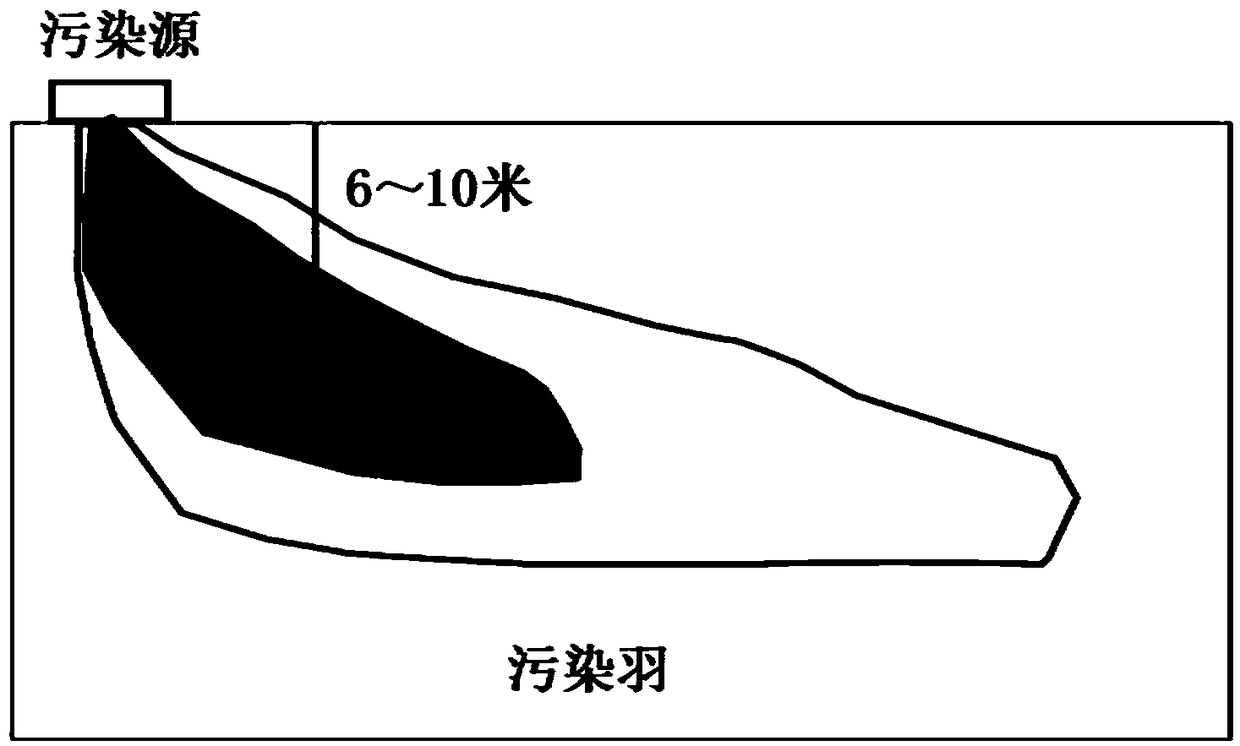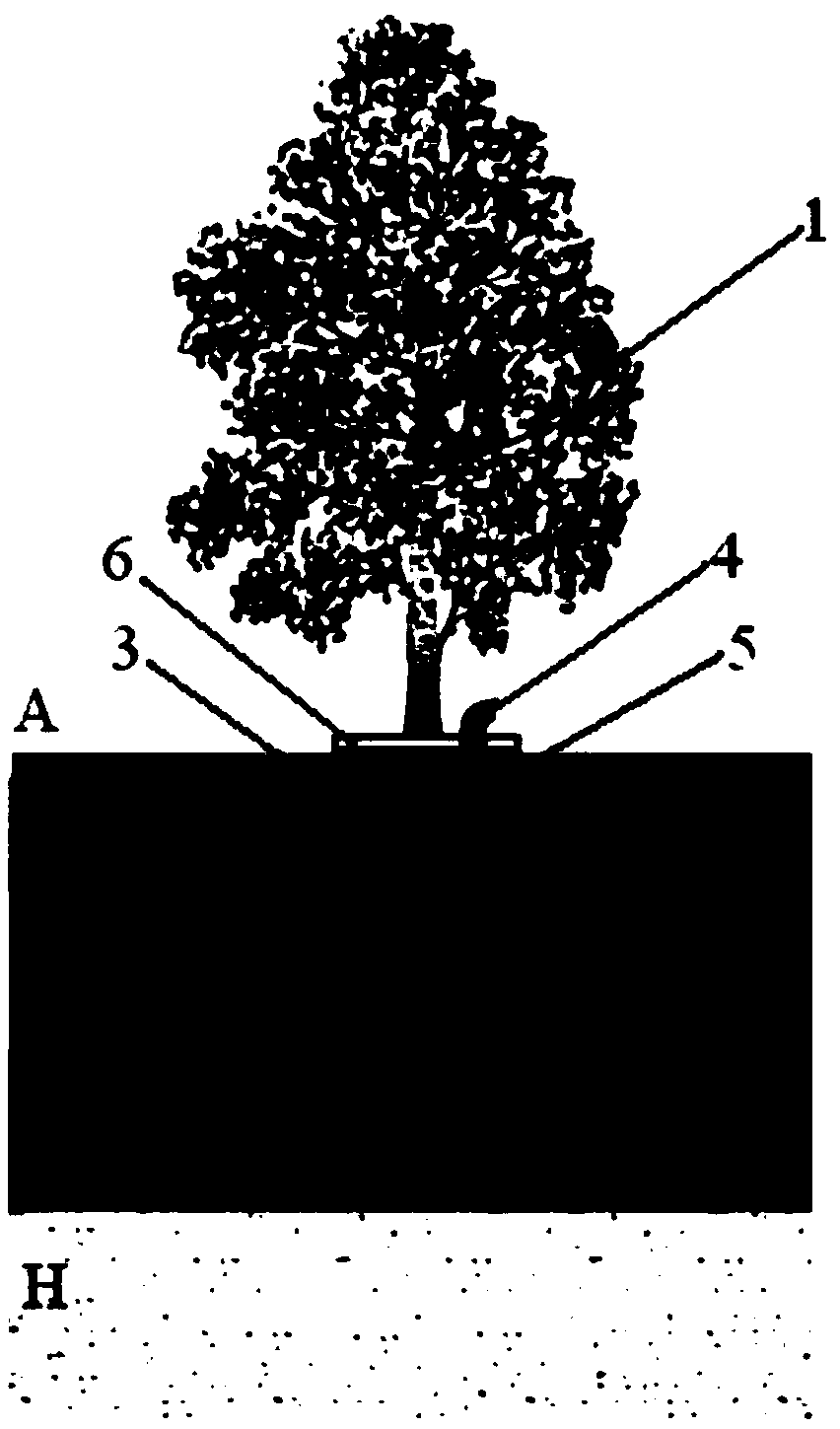A phytoremediation method for underground soil pollution
A soil pollution and phytoremediation technology, applied in the field of contaminated environment remediation, can solve the problems of less research on the root growth of remediation plants, and achieve the effect of improving remediation efficiency and efficient soil in-situ remediation
- Summary
- Abstract
- Description
- Claims
- Application Information
AI Technical Summary
Problems solved by technology
Method used
Image
Examples
Embodiment 1
[0040] Poplar (Xinjiang Populus) was used as the restoration plant to carry out the experiment.
[0041] A method for phytoremediation of underground soil pollution, specifically comprising the following steps:
[0042] (1) Take the pollution source as the center, investigate the types, depths and concentrations of pollutants in the surrounding soil, and use the Surfer software film to prepare the shape characteristics of the three-dimensional pollution plume according to the pollutant investigation results, (such as figure 1 shown).
[0043] (2) Select the pollution point with the depth of the pollution plume within the range of 6-10m, and excavate a deep well with a diameter of 0.7m and a depth 0.5-1m higher than the groundwater level.
[0044] (3) Place a high-density polyethylene plastic-limiting film with a hollow cylindrical structure with openings at both ends in the well, so that the outer wall of the plastic-limiting film is close to the inner wall of the deep well, ...
Embodiment 2
[0059] Using willow (Salix nigra) as the restoration plant, the test was carried out. The specific restoration method and measurement method were the same as in Example 1, and the results are shown in Table 2.
[0060] Table 2 The absorption and removal effect of willow on common soil pollutants
[0061]
[0062] Note: During the above heavy metal restoration process, willow did not show any toxic effect.
[0063] From the above results, it can be clearly seen that poplar and willow have obvious extraction effects on heavy metals and organic pollutants in the third year after planting, and the accumulation ability of roots, stems and leaves to pollutants is different. Heavy metals are mainly reflected in the accumulation of plants, while some organic pollutants may be degraded in plant roots and plants, and some volatile pollutants can pass through the transpiration of leaves.
[0064] Taking heavy metal pollution as an example, in a poplar or willow tree with a dry weight...
PUM
 Login to View More
Login to View More Abstract
Description
Claims
Application Information
 Login to View More
Login to View More - R&D Engineer
- R&D Manager
- IP Professional
- Industry Leading Data Capabilities
- Powerful AI technology
- Patent DNA Extraction
Browse by: Latest US Patents, China's latest patents, Technical Efficacy Thesaurus, Application Domain, Technology Topic, Popular Technical Reports.
© 2024 PatSnap. All rights reserved.Legal|Privacy policy|Modern Slavery Act Transparency Statement|Sitemap|About US| Contact US: help@patsnap.com










